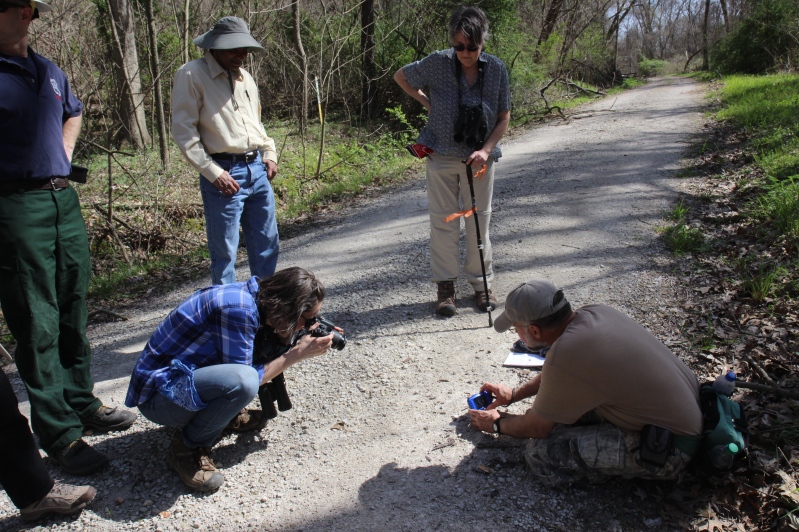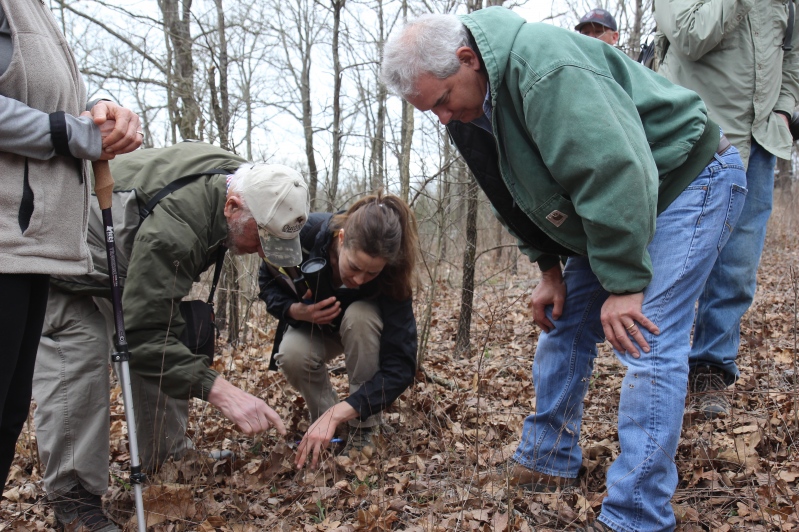Natural Areas Association
April Regional Workshop "Let the Sun Shine In" Offers Strategies for Restoring Oak Communities
by Tracy Fidler, Public Affairs Officer, US Forest Service, Shawnee National Forest
A group of natural area professionals recently joined an emerging conversation about how to restore a mosaic of forest communities at a landscape scale. Collaborators in Illinois shared how they’re managing large, contiguous landscapes for biological diversity and oak recovery. About 40 people attended the event, which

featured 15 speakers and was co-sponsored by Natural Areas Association, Shawnee Resource, Conservation, & Development Area, University of Illinois – Extension, Illinois Department of Natural Resources and Shawnee National Forest.
Scientists predict Southern Illinois forests may be the first in central North America to convert completely from a forest dominated by oaks to one dominated by shade-loving species, such as maple. Oaks — along with the grasses and wildflowers that grow underneath them — cannot grow in low light conditions. The region is expected to lose its biodiversity if efforts are not made to restore Illinois’ oak-

dominated natural communities, such as barrens and woodlands.
Individuals, concerned about the loss of biodiversity in the region, created the
Let the Sun Shine In initiative. Although partners — such as the U.S. Forest Service, Illinois Department of Natural Resources, National Wild Turkey Federation, University of Illinois – Extension, The Nature Conservancy, U.S. Fish and Wildlife Service, Southern Illinois University, University of Carbondale, Central Hardwoods Joint Venture Partnership, River to River Cooperative Weed Management Area, Southern Illinois Prescribed Burn Association, and Shawnee RC&D — have collaborated for years, the project identifies priority areas for management in the region and uses natural areas as hotspots of biological diversity.
The event also included a visit to Shawnee National Forest’s La Rue Pine Hills famed Snake Road — the only

known road in America closed for snake and amphibian migration. The gradual, two-month migration event attracts people from across the country eager to witness the rich diversity of reptile and amphibian species along this single stretch of road. About 66 percent of the amphibians and 59 percent of the reptiles known to occur in Illinois are found here.
 featured 15 speakers and was co-sponsored by Natural Areas Association, Shawnee Resource, Conservation, & Development Area, University of Illinois – Extension, Illinois Department of Natural Resources and Shawnee National Forest.
featured 15 speakers and was co-sponsored by Natural Areas Association, Shawnee Resource, Conservation, & Development Area, University of Illinois – Extension, Illinois Department of Natural Resources and Shawnee National Forest. dominated natural communities, such as barrens and woodlands.
dominated natural communities, such as barrens and woodlands. known road in America closed for snake and amphibian migration. The gradual, two-month migration event attracts people from across the country eager to witness the rich diversity of reptile and amphibian species along this single stretch of road. About 66 percent of the amphibians and 59 percent of the reptiles known to occur in Illinois are found here.
known road in America closed for snake and amphibian migration. The gradual, two-month migration event attracts people from across the country eager to witness the rich diversity of reptile and amphibian species along this single stretch of road. About 66 percent of the amphibians and 59 percent of the reptiles known to occur in Illinois are found here.